Have you ever wondered, Why do dogs have wet noses? This intriguing question has puzzled pet owners for ages. The truth behind your furry friend’s damp snout is not just a quirky feature; it’s deeply rooted in their biology and behavior. A dog’s nose is not just for sniffing out treats; it serves as a vital tool for thermoregulation and communication. But what makes it so wet? This article will delve into the fascinating truth behind this common canine characteristic. You might be surprised to learn that a wet nose can indicate a healthy dog, as it helps enhance their sense of smell. But wait, there’s more! Have you ever thought about how a dog’s nose changes with the weather? Or why some breeds have drier noses than others? Join us as we explore the science, myths, and surprising facts about why dogs have wet noses. Discover the answers to your burning questions and unlock the secrets of your beloved pet’s unique physiology! Get ready to be amazed by the wonders of nature and deepen your understanding of your canine companion. Don’t miss out on this enlightening journey into the world of dogs!
The Science Behind Wet Noses: Why Do Dogs Rely on Their Moist Muzzles?

Have you ever pondered why dogs have wet noses? It’s a question that so many dog lovers ask, yet the answer is quite fascinating and multi-faceted. The moistness of a dog’s muzzle is not just a quirky trait but rather a vital aspect of their biology and behavior. In this article, we will explore the science behind wet noses and what role they play in the lives of our furry companions.
The Biology of Dog Noses
Firstly, a dog’s nose is not just for show. It’s packed with olfactory receptors—up to 300 million of them—compared to a human’s mere 5 million. This makes dogs incredible at smelling. But why the wetness? The moisture on a dog’s nose serves several purposes. Here’s a breakdown of some key functions:
- Enhanced Smell: Wet noses help capture scent particles in the air. When these particles land on a moist surface, they dissolve, making it easier for the dog to detect them.
- Temperature Regulation: Dogs don’t sweat like humans do. Their noses help regulate body temperature. When they pant, the moisture evaporates from their noses and helps cool them down.
- Health Indicator: A dog’s nose can reflect its health. A wet nose is often a sign of a healthy, hydrated pet, while a dry or cracked nose might indicate illness or dehydration.
Historical Context of Dog Noses
Throughout history, dogs has been bred for specific traits, many of which revolve around their sense of smell. For instance, hunting breeds like Bloodhounds and Beagles have been refined to have exceptional olfactory capabilities. This has made them invaluable in search and rescue missions, or even tracking down criminals.
It’s interesting to note that the wetness of a dog’s nose was likely a trait that became pronounced over time due to natural selection. Dogs with better-smelling abilities had a survival advantage, thus leading to generations of dogs with moist muzzles.
Why Do Dogs Have Different Nose Conditions?
Not all dogs have the same nose, and there could be various reasons for this. Here’s a quick comparison of different conditions that affect dog noses:
- Normal Wet Nose: Most dogs have a naturally moist nose. This is the optimal condition for scent detection.
- Dry Nose: A dry nose can be normal in some cases, especially if the dog has been sleeping or is feeling warm. However, it can also indicate dehydration or illness.
- Cracked or Bleeding Nose: This could indicate environmental issues, such as dry air or allergies. Persistent issues should be checked by a vet.
Fun Facts About Dog Noses
- Dogs has a unique nose print much like a human fingerprint. Each nose is different, and it can be used for identification.
- The shape of a dog’s nose can affect its smelling ability. Breeds with longer noses, like Greyhounds, tend to have better olfactory capabilities.
- Dogs can even detect diseases like cancer through their sense of smell. Some have been trained to sniff out certain types of cancer in patients.
How to Care for Your Dog’s Nose
Maintaining your dog’s nose is important for their overall health. Here are some practical tips:
- Hydration: Ensure your dog has constant access to fresh water. A well-hydrated dog is more likely to have a healthy, moist nose.
- Humidity Control: In dry climates, consider using a humidifier. This can help maintain moisture levels in the air and prevent your dog’s nose from drying out.
- Regular Check-ups: Regular vet visits can help catch any potential issues with your dog’s nose or overall health.
The Bottom Line
In summary, a dog’s wet nose is more than just a cute feature; it serves several crucial functions that contribute to their health and behavior. From enhancing their sense of smell to regulating temperature, understanding why dogs have wet noses can deepen our appreciation for these loyal companions. Next time you give your dog a gentle pat on their moist muzzle, remember the amazing biology at play that makes them such remarkable creatures. Whether you’re a dog owner or an admirer, knowing these fascinating truths about our furry friends only enriches the bond we share with them.
5 Surprising Benefits of Wet Noses in Dogs: What Every Pet Owner Should Know

Many dog owners often wonder about the nature of their furry friends, especially when it comes to those charming, wet noses. You might be surprised to learn that those damp noses are not just cute features—they play important roles in your dog’s health and behavior. In this article, we will explore 5 surprising benefits of wet noses in dogs, and answer the question, “Why do dogs have wet noses?” Let’s dive into the fascinating truth that every pet owner should know.
1. Enhanced Sense of Smell
Did you know that dogs have an extraordinary sense of smell? Their noses are wet for a reason! The moisture helps to capture scent particles in the air, making it easier for dogs to detect different aromas. This is why dogs are often used in search and rescue missions, detecting drugs, or even finding missing persons.
- A dog’s sense of smell is estimated to be 10,000 to 100,000 times more sensitive than humans.
- The wetness on their noses aids in absorbing scent chemicals, which is essential for tracking and hunting.
2. Temperature Regulation
Another interesting fact about wet noses is their role in thermoregulation. Dogs don’t sweat like humans do. Instead, they rely on their noses to help control their body temperature. The moisture on a dog’s nose evaporates, which can help cool them down.
- Wet noses can indicate a dog is comfortable and healthy.
- In hot weather, a dog’s nose might feel drier, which could signal dehydration or overheating.
3. Social Communication
Dogs are social creatures, and their wet noses play a key part in how they communicate with each other and with humans. A wet nose can be a sign of affection or can signal that a dog is feeling friendly and open to interaction.
- When dogs greet each other, they often sniff each other’s noses, which helps them gather important social information.
- A quick nudge with a wet nose can be a dog’s way of saying, “Hey, pay attention to me!” or “I love you!”
4. Health Indicator
The condition of a dog’s nose can be a reflection of their health. A wet, cool nose is generally considered a sign of a healthy dog, while a dry or cracked nose could indicate health issues. However, it’s not always a definitive measure.
- A normal dog’s nose can change throughout the day, so don’t panic if it feels dry at times.
- Other signs to watch for include changes in color, excessive dryness, or discharge. If these occur, it might be time for a vet visit.
5. Unique Identification
Just like human fingerprints, a dog’s nose print is unique to each individual. This means that nose prints could potentially be used for identification purposes! Each dog has a distinct pattern of ridges and creases that can be used in a similar way to a fingerprint.
- Nose prints can be taken easily and stored for identification.
- This method of identification is not widely used, but it offers an intriguing aspect of canine biology.
Why Do Dogs Have Wet Noses? The Science Behind It
The science behind why dogs have wet noses connects to their biology and evolution. Dogs are descendants of wolves, who also have wet noses. The moisture helps them thrive in their environments by enhancing their ability to track scents.
- Evolutionarily, a wet nose provided an advantage when hunting or avoiding predators.
- The structure of a dog’s nose is designed to maximize scent detection, which is crucial for their survival in the wild.
Quick Facts about Dog Noses:
- Dogs can smell up to 300 million smell receptors, compared to only about 5 million in humans.
- The wetness of a dog’s nose is largely due to mucous secretions, which keep the nose moist and aid in scent absorption.
- Dogs use their sense of smell not just for hunting, but also for social interactions and navigating their world.
As a dog owner, understanding these remarkable benefits of wet noses can enhance your appreciation for your pet’s unique biology. It’s fascinating how such a small feature can have such a significant impact on a dog’s life and well-being. When you see your dog’s wet nose, remember it’s not just cute—it’s a vital tool in their interactions with the world. So, next time you’re snuggled up with your furry friend, take a moment to consider the science behind that adorable wet nose!
Do Wet Noses Mean Healthy Dogs? Unpacking the Myths and Facts
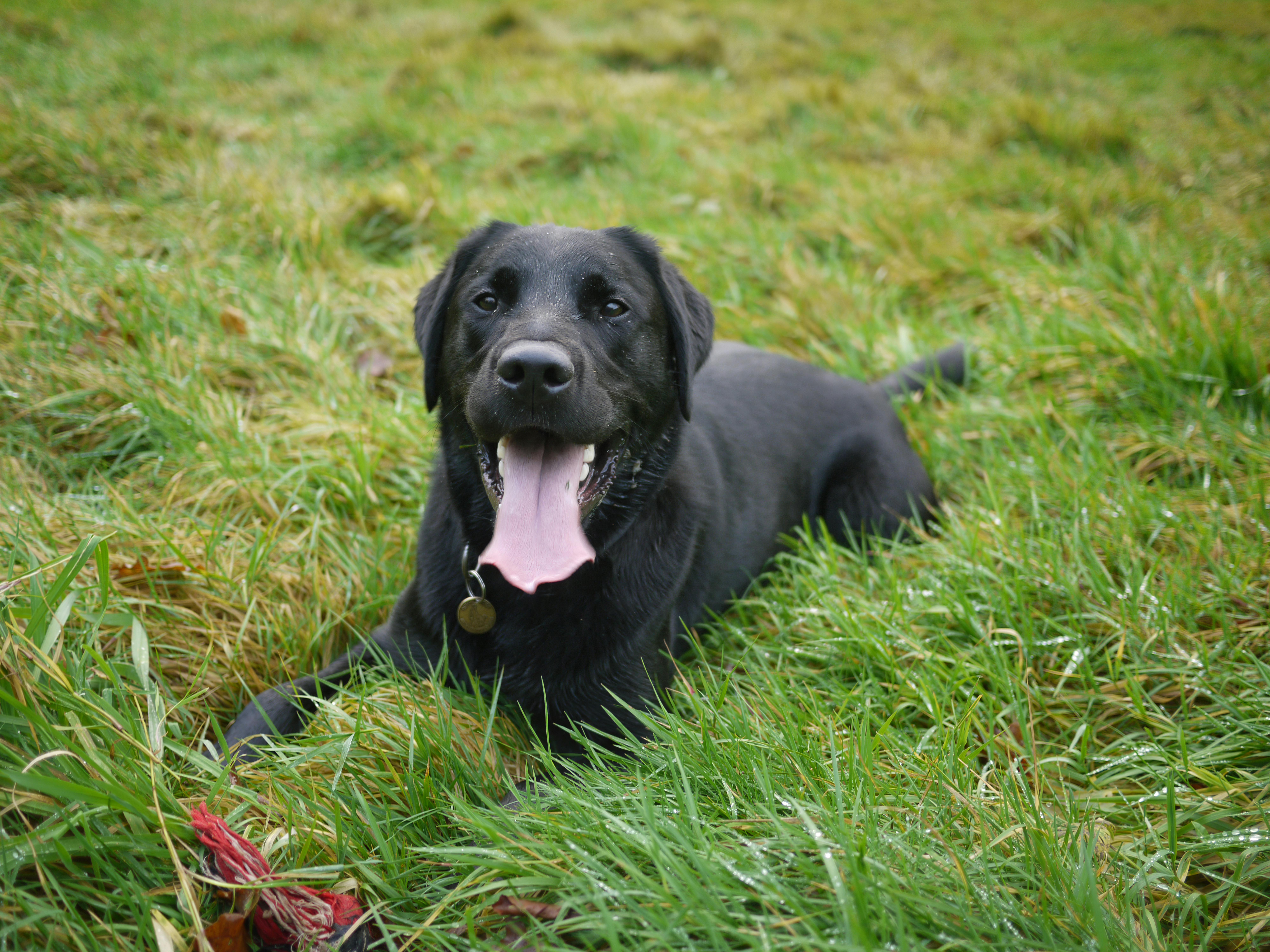
Ever notice your dog’s nose? It’s often cold and wet, but do wet noses mean healthy dogs? Many people think so, but it turns out there’s more to the story. Let’s dive into the world of dog noses and discover the fascinating truth behind why do dogs have wet noses.
The Basics: What’s Normal for Dog Noses?
First off, dog noses can vary in moisture levels. A dog can have a wet or dry nose, and both can still be perfectly normal. Here’s a quick breakdown of what you might observe:
- Wet Nose: Often indicates a healthy dog, but it’s not the only sign.
- Dry Nose: Can be normal too, especially when they just woke up or are feeling relaxed.
- Temperature: A normal dog nose should feel cool to the touch, but temperature alone isn’t a health marker.
So, what’s the reason behind that wetness?
Why Do Dogs Have Wet Noses?
Dogs have wet noses for a few reasons, and it’s more than just a sign of health. It’s a unique feature that helps them in various ways:
- Scent Detection: A moist nose helps capture scent particles more effectively. When a dog sniffs, the moisture helps to absorb scents, giving them a stronger sense of smell.
- Thermoregulation: Dogs can’t sweat like humans do. Their noses help to cool them down. The moisture evaporating from their noses can help keep them comfortable.
- Health Indicator: While a wet nose can be a sign of health, it’s not definitive. Factors like environment, hydration, and activity level can all influence your dog’s nose moisture.
The Myths Surrounding Wet Noses
There are plenty of myths about dog noses that can confuse pet owners. Here’s a few of them:
- Myth #1: A wet nose means your dog is healthy.
- Myth #2: A dry nose means your dog is sick.
- Myth #3: Dogs with wet noses can’t have allergies.
The truth is, while a wet nose can be a good sign, it’s not a foolproof method for gauging your dog’s health.
Factors Influencing Nose Moisture
The moisture on a dog’s nose can fluctuate due to several factors. Here’s a list of things that can affect it:
- Weather Conditions: Hot and dry weather can lead to a drier nose.
- Age: Older dogs might have drier noses compared to younger ones.
- Health Issues: Some medical conditions can lead to changes in nose moisture.
When to Be Concerned About Your Dog’s Nose
While most nose changes are normal, some can signal health problems. Here’s what to watch for:
- Cracks or Bleeding: If your dog’s nose is cracked or bleeding, it might need to be checked by a vet.
- Persistent Dryness: If your dog’s nose stays dry for an extended period, it could indicate dehydration or illness.
- Color Changes: A sudden change in color (like turning pale or blue) should be taken seriously.
Practical Tips for Monitoring Your Dog’s Nose
Keeping an eye on your dog’s nose can help ensure they’re healthy. Here’s what you can do:
- Daily Checks: Look at your dog’s nose every day. Get to know what’s normal for them.
- Hydration: Make sure your dog is drinking enough water. Hydration affects nose moisture.
- Vet Visits: Regular vet check-ups can catch potential health issues before they become serious.
Conclusion
So, do wet noses mean healthy dogs? Not always, but they can be a good indicator of a dog’s overall health. Understanding the reasons behind why dogs have wet noses and recognizing the myths can help you take better care of your furry friend. By observing changes in your dog’s nose and being aware of what to look for, you can ensure they remain happy and healthy. Always remember, any concerns about your dog’s health should be discussed with a veterinarian.
Why Are Dog Noses Wet? The Fascinating Connection to Canine Senses
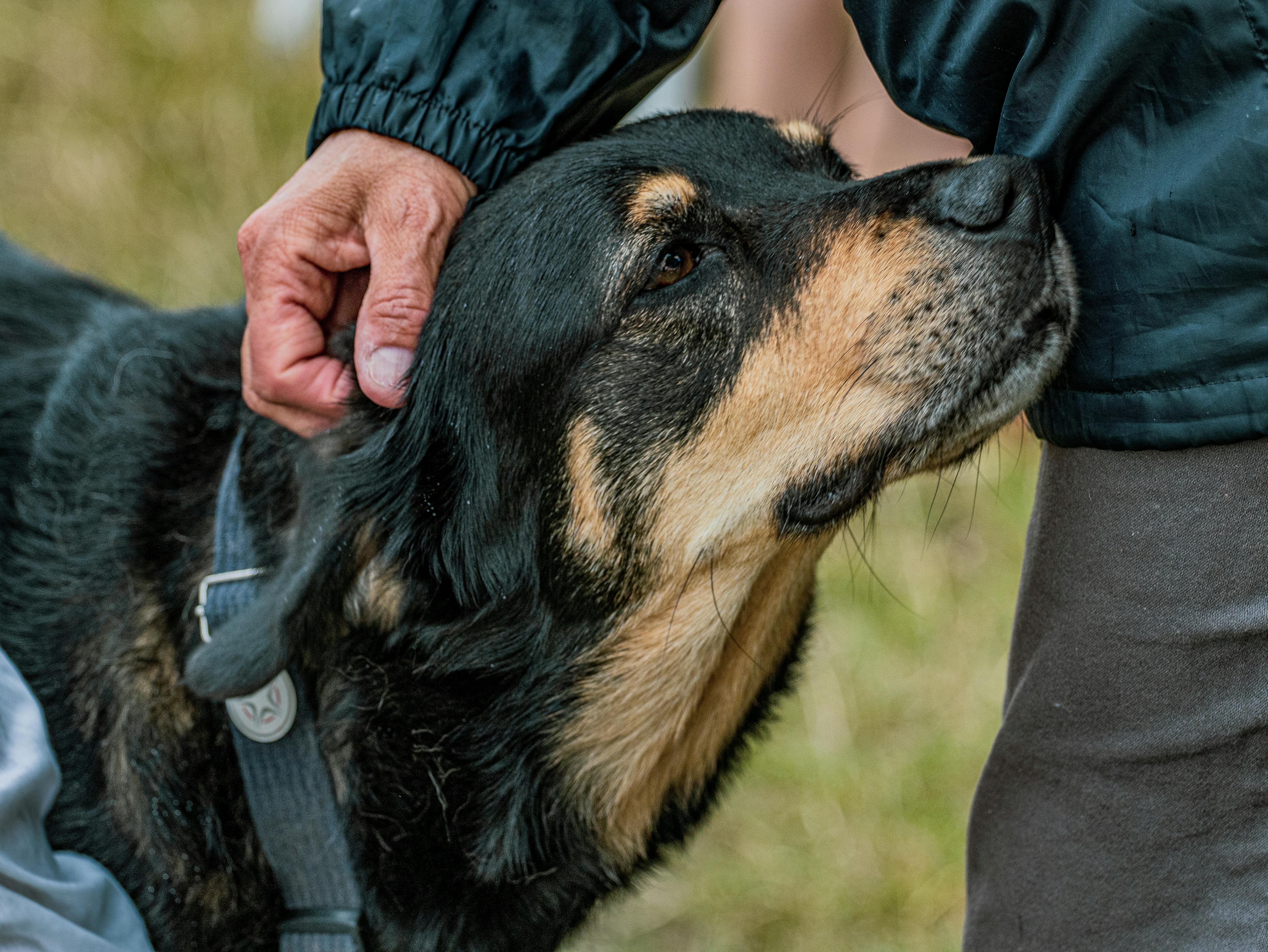
Have you ever wondered why dog’s noses are so wet? It’s a question many dog owners ask, and the answer is more fascinating than you might think. Wet noses in dogs are not just for show; they serve important purposes that connect deeply to their senses and overall health. Let’s dive into the intriguing world of canine noses and why they play such a vital role in a dog’s life.
The Science Behind Wet Noses
Dog noses are typically moist because they secrete a thin layer of mucus. This moisture helps to enhance their sense of smell, which is already incredibly powerful. Dogs have around 220 million scent receptors, compared to humans’ mere 5 million. The wetness on their noses increases the surface area for scent molecules, allowing dogs to pick up on various smells more effectively.
- Scent Detection: The moisture captures scent particles in the air, making it easier for dogs to identify different smells.
- Temperature Regulation: A wet nose can help cool dogs down, as they don’t sweat like humans do. Instead, they rely on their nose to help regulate body temperature.
- Health Indicator: A dog’s nose can indicate its health. A dry or warm nose might suggest illness, while a cool, wet nose is often a sign of a healthy pup.
Why Do Dogs Have Wet Noses? The Fascinating Truth!
The reasons behind wet noses go beyond just biology. There’s a historical and evolutionary aspect to consider. Dogs, descended from wolves, have maintained many of the same traits. Wolves often hunt in packs and rely on their sense of smell to track prey. This need for acute olfactory ability has been passed down through generations, and wet noses are an integral part of that.
Interesting Facts About Dog Noses
- Dogs and Smell: Dogs can smell things that are up to 100,000 times more subtle than humans can. This means they can detect scents that are imperceptible to us.
- Nose Print Identification: Just like human fingerprints, every dog has a unique nose print, which can be used for identification.
- Nasal Turbinates: Dogs have complex structures in their noses called turbinates, which help to filter, warm, and moisten the air they breathe in.
How Wet Noses Benefit Dogs
- Enhanced Olfactory Function: Wet noses trap scent particles, making it easier for dogs to smell things in their environment.
- Cooling Mechanism: When panting doesn’t cut it, a wet nose can help cool a dog down on hot days.
- Health Monitoring: Owners can often tell if something is off with their pet just by feeling their nose.
Common Misconceptions
Many people believe that a dog’s nose must always be wet to be healthy. While a wet nose is generally a good sign, it’s not the only indicator of health. Factors like temperature, humidity, and activity level can affect nose moisture. Moreover, some breeds naturally have drier noses than others, which is perfectly normal.
The Role of Breed Differences
Different dog breeds can exhibit varying nose moisture levels. For example:
- Sighthounds: Breeds like Greyhounds may have drier noses due to their lean body structure.
- Bulldogs: These dogs often have more moisture due to their shorter snouts, which may make their noses appear wetter.
Practical Tips for Dog Owners
- Regular Health Checks: Pay attention to your dog’s nose along with other health indicators, such as energy levels and appetite.
- Hydration: Ensure your dog stays hydrated, especially during warmer months, to help maintain that healthy wet nose.
- Consult Your Vet: If you notice significant changes in your dog’s nose moisture or temperature, it’s wise to consult a veterinarian.
Understanding why dogs have wet noses unveils a fascinating aspect of canine biology and behavior. Their noses are not just cute features; they play vital roles in health, communication, and survival. The next time you pet your furry friend, remember that those wet noses are a testament to their extraordinary senses and evolutionary history. Embrace the quirks and enjoy the unique bond you share with your dog.
Top 7 Reasons Dogs Have Wet Noses: From Temperature Regulation to Communication
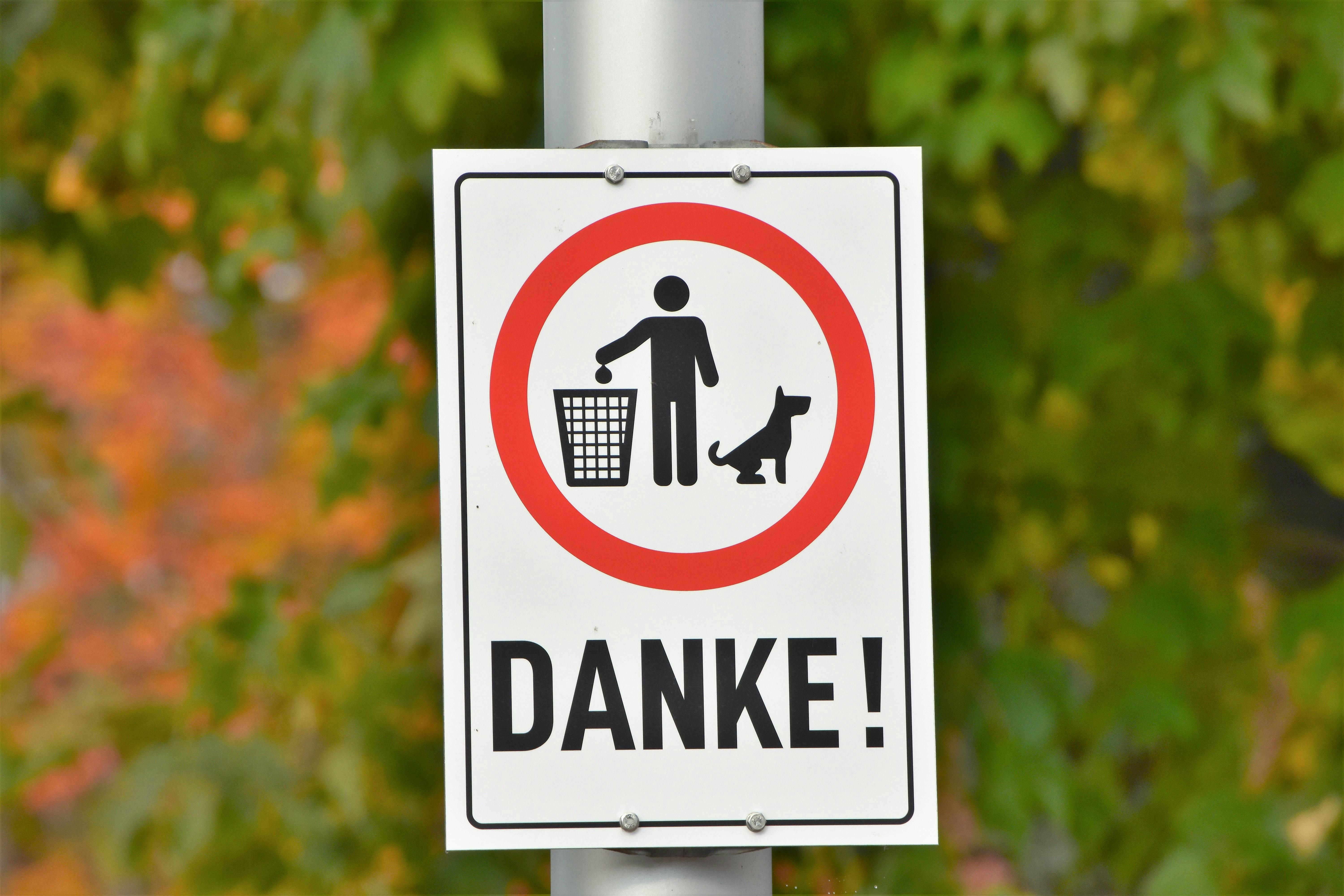
Ever wonder why dogs have wet noses? It’s one of those charming traits that many dog lovers notice, but few really think about. Those cool, damp noses can be more than just a cute feature; they serve several important functions in a dog’s life. Let’s take a look at the top 7 reasons dogs have wet noses, exploring everything from temperature regulation to communication.
1. Temperature Regulation
One of the primary reasons for a dog’s wet nose is to help regulate its body temperature. Dogs can’t sweat like humans do, so they rely on their noses to cool off. A wet nose can evaporate moisture, which helps to cool the dog down. In hot weather, this is especially important, as dogs can easily overheat.
2. Enhanced Sense of Smell
Another fascinating aspect is that a wet nose improves a dog’s sense of smell. Dogs have a highly developed olfactory system, and a moist nose can help capture scent particles better. In fact, the moisture on their noses allows them to pick up scents more effectively than if it were dry. This ability is a part of their evolutionary history, as scents play a major role in how dogs communicate with each other and their environments.
3. Communication Tool
Dogs also use their noses as a form of communication. When they greet other dogs, they often touch noses. This is a way of exchanging information about each other’s health, mood, and even diet. A wet nose can signal to other dogs that they are friendly and approachable. In addition, dogs can detect pheromones through their noses, which are chemicals that can communicate a range of emotions and intentions.
4. Health Indicator
The moisture level of a dog’s nose can also be an indicator of their health. A healthy dog usually has a cool, damp nose. If a dog’s nose becomes dry or cracked, it may signal dehydration, illness, or other health concerns. However, this is not a definitive sign of health issues, as some dogs naturally have drier noses than others.
5. Sense of Taste
Believe it or not, a dog’s wet nose plays a role in their sense of taste too. When a dog licks something, the moisture on their nose helps to enhance their tasting experience. This is why dogs may often sniff before they taste something. Their brains combine smell and taste, resulting in a better understanding of their food or other objects.
6. Environmental Awareness
Dogs are incredibly aware of their environment, and their wet noses help them gather information about it. When they sniff the ground or other surfaces, moisture on their noses helps to absorb smells from the environment, providing them with a detailed analysis of what’s around. For a dog, this is like reading a newspaper; they get vital info about other animals, people, and even potential dangers.
7. Instinctual Behavior
Lastly, the wet nose is part of a dog’s natural instincts. Dogs have evolved over thousands of years, and their wet noses are a trait that has been preserved because it benefits their survival. In the wild, a dog with a wet nose is better equipped to hunt, find food, and communicate with other pack members.
Summary of Reasons Dogs Have Wet Noses
- Temperature Regulation: Helps cool the dog down.
- Enhanced Sense of Smell: Moisture captures scent particles better.
- Communication Tool: Touching noses exchanges information.
- Health Indicator: A sign of hydration and health.
- Sense of Taste: Moist noses improve tasting experience.
- Environmental Awareness: Helps gather information about surroundings.
- Instinctual Behavior: A trait benefitting survival.
Understanding why dogs have wet noses offers insights into their behavior and health. It’s amazing how something as simple as a wet nose can play such a vital role in a dog’s life.
So next time you give your furry friend a scratch behind the ears, take a moment to appreciate that delightful wet nose. It’s not just adorable; it’s a crucial part of what makes dogs such fascinating companions.
Curious Canines: How Wet Noses Enhance a Dog’s Sense of Smell
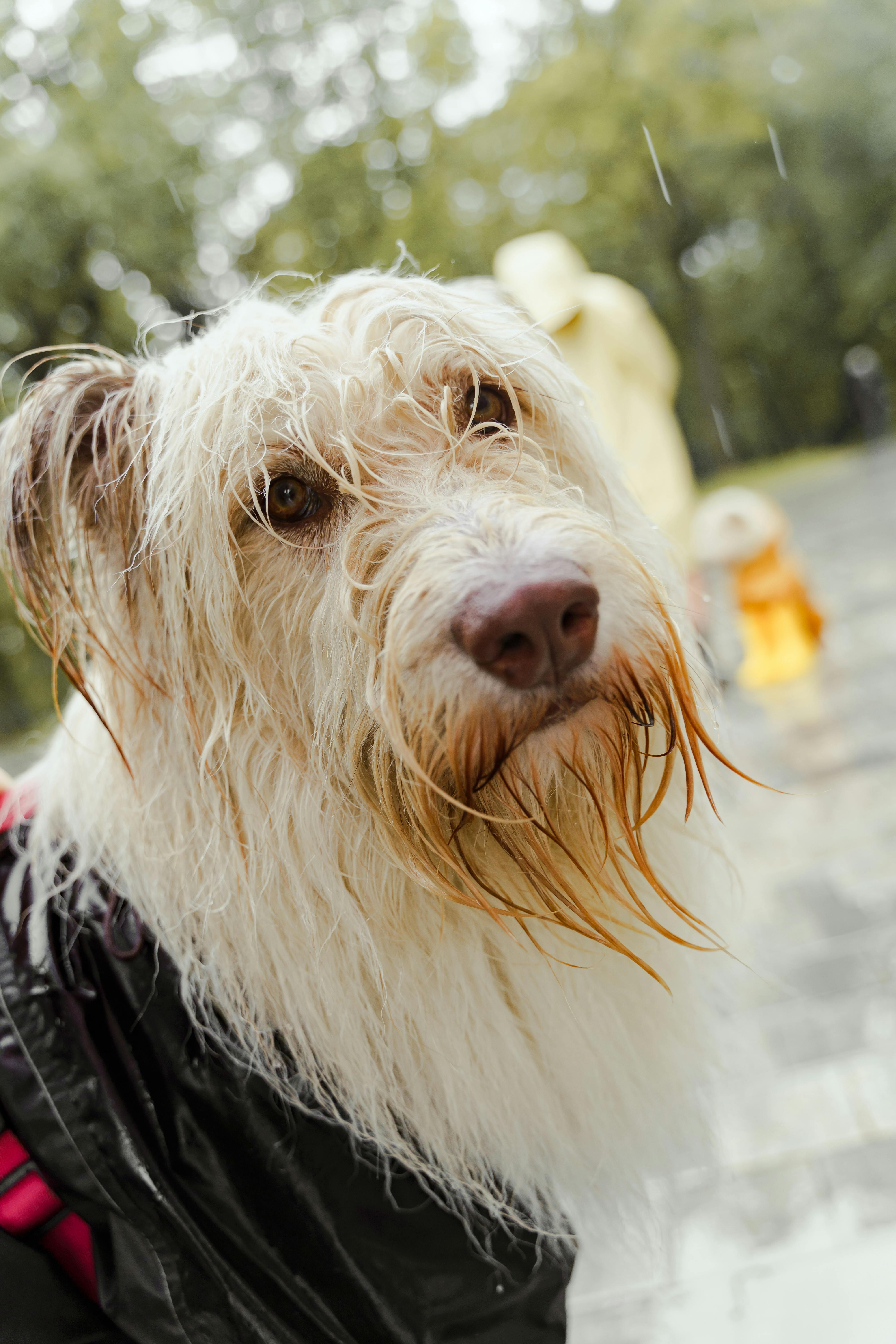
Every dog owner knows that their furry friends have a unique way of connecting with the world. One of the most interesting aspects about dogs is their wet noses. You might wonder, why do dogs have wet noses? Well, there’s actually a fascinating truth behind it. Wet noses play a crucial role in enhancing a dog’s sense of smell, which is far superior to that of humans. Let’s dive into this intriguing topic and uncover the secrets behind those curious canines.
The Science Behind Wet Noses
The primary reason why dogs have wet noses is because moisture enhances their olfactory abilities. When a dog’s nose is wet, it helps to capture scent particles in the air. This means that they can smell things much more effectively than we can.
Here’s how it works:
- Moisture Attraction: The wet surface of a dog’s nose traps scent molecules, making it easier for them to detect different smells.
- Temperature Regulation: A wet nose helps to cool down a dog’s body. When dogs breathe, moisture evaporates off their noses, which can help lower their body temperature.
- Scent Discrimination: Dogs possess about 220 million scent receptors in their noses, compared to a human’s 5 million. The wetness of their noses enhances their ability to differentiate between various scents.
Historical Context of Dogs’ Noses
Dogs have been companions to humans for thousands of years. Historically, they were bred for specific traits, including their sense of smell. Ancient civilizations recognized the value of dogs’ olfactory capabilities. They used dogs for hunting, tracking, and even detecting diseases.
Some breeds are particularly known for their keen sense of smell, including:
- Bloodhounds: Known for their incredible tracking skills.
- Beagles: Often used in search and rescue missions.
- German Shepherds: Frequently employed in police work.
Fun Facts About Dogs’ Noses
- Unique Patterns: Just like human fingerprints, each dog’s nose print is unique and can be used for identification.
- Color Variations: A dog’s nose can be black, brown, or even pink, depending on their breed and genetics.
- Health Indicator: A healthy dog generally has a cool, moist nose. If a dog’s nose is excessively dry or warm, it might indicate illness.
Why Wet Noses Matter
The moisture on a dog’s nose isn’t just for show. It plays a pivotal role in their interaction with the environment. For instance, dogs use their noses to gather information about their surroundings, which is crucial for their safety and well-being.
Here are some ways wet noses contribute to a dog’s daily life:
- Social Interactions: Dogs greet each other by sniffing noses. This behavior helps them gather information about other dogs.
- Hunting and Foraging: Wet noses help dogs track down food sources or scent trails when they’re hunting.
- Emotional Connection: Dogs can sense their owner’s emotional state through smell, which is enhanced by the wetness of their nose.
Comparing Dogs to Other Animals
When you look at other animals, you might wonder how dogs’ wet noses stack up. Here’s a quick comparison with some other animals known for their sense of smell:
| Animal | Sense of Smell | Wet Nose? | Reason for Smell Sensitivity |
|---|---|---|---|
| Dogs | Excellent | Yes | Captures scent particles effectively |
| Cats | Good | No | Less reliance on smell than dogs |
| Elephants | Exceptional | No | Large olfactory bulbs for scent detection |
| Bears | Outstanding | No | Highly developed sense of smell |
Practical Examples of Smell Use
Dogs use their powerful noses for many practical purposes. Here are some real-world examples:
- Search and Rescue: Dogs can find missing persons in disaster situations.
- Medical Detection: Some dogs can detect diseases like cancer or diabetes through scent.
- Detection Work: Dogs are trained to find drugs or explosives, utilizing their amazing sense of smell.
Wet noses are more than just an adorable feature of dogs. They are essential for a dog’s interaction with the world and play a vital role in their health and behavior. Understanding this can enhance the bond between humans and dogs, providing a glimpse into how these curious canines navigate their lives with an extraordinary sense of smell. So next time you see your dog’s wet nose, remember, it’s not just cute—it’s a fascinating tool for survival and connection!
The Role of Wet Noses in Dog Behavior: What Your Pup is Trying to Tell You

Dogs are truly fascinating creatures, and if you’re a dog owner, you’ve probably seen your pup sniffing around, wagging its tail, and, yes, having a wet nose. But have you ever wondered, why do dogs have wet noses? It’s not just a quirky trait; it’s actually a significant part of how they interact with the world. Wet noses play important roles in dog behavior and communication. Let’s dive into the science, history, and some interesting facts about why your furry friend’s nose is often damp.
The Science Behind Wet Noses
A dog’s nose is covered with a thin layer of moisture, which helps in a couple of key ways:
- Enhanced Smell: The wetness helps trap scent particles, making it easier for dogs to pick up smells. Dogs have an extraordinary sense of smell, about 10,000 to 100,000 times more sensitive than humans, and that wet nose is part of what makes it possible.
- Thermoregulation: Just like humans sweat, dogs can cool down through their noses. The moisture evaporates, which helps to regulate their body temperature.
So, if your pup’s nose feels wet, it’s doing its job both in smelling and in staying cool!
Historical Perspective
Dogs evolved from wolves thousands of years ago, and their wet noses have been around since then. Early humans domesticated wolves, leading to the dogs we know today. The wet nose has been an evolutionary advantage for dogs, helping them survive in the wild. It allowed them to track prey and navigate their environment better.
What Your Dog is Trying to Tell You
Dogs communicate in various ways, and their noses are a big part of it. Here are some things to consider when you see your dog’s nose:
- Curiosity: If your dog is sniffing around a new place, it’s their way of gathering information. Dogs have scent glands in their noses that help them understand their environment.
- Emotional State: A wet nose can indicate that your dog is relaxed and content. Conversely, a dry nose might suggest stress or illness. However, it’s not a definitive indicator of health; context matters!
- Greeting: When dogs meet each other, they often sniff each other’s noses as a way of saying hello. It’s like a handshake in the dog world!
Fun Facts About Dog Noses
- Unique Patterns: Just like human fingerprints, every dog’s nose print is unique. You could use it as a form of identification!
- Scent Discrimination: Dogs can detect certain substances, like drugs or explosives, because of their powerful noses. They can be trained to find missing persons or detect diseases like cancer.
- Nose Temperature: A dog’s nose temperature can vary throughout the day. A cooler nose may indicate a healthy pup, while a warm nose can sometimes suggest a fever, but again, this is not an absolute rule.
Practical Examples of Nose Behavior
When your dog’s nose is wet and cold, it may be feeling relaxed. If the nose is dry and warm, it might be time for some extra care. Here’s a simple list of behaviors to observe:
- Sniffing The Ground: Curious about something or trying to gather scents.
- Pawing at Your Hand: Wanting attention or affection.
- Licking Their Nose: Could be a sign of anxiety or excitement.
Quick Comparison: Dog Noses vs. Human Noses
| Feature | Dog Noses | Human Noses |
|---|---|---|
| Sensitivity | 10,000 to 100,000 times more sensitive | Less sensitive |
| Wetness | Often wet | Generally dry |
| Scent Detection | Excellent for tracking scents | Limited, primarily for taste |
| Temperature Regulation | Helps cool down | Sweating through skin |
Conclusion
Understanding the role of wet noses in dog behavior can strengthen the bond between you and your canine companion. It can also help you recognize when your pup is trying to tell you something. Whether it’s curiosity, health signals, or just a social greeting, your dog’s wet nose is a crucial part of its communication toolkit. So next time you give your pup a scratch behind the ears, remember, their wet nose is not just cute; it’s a window into their world!
Is Your Dog’s Nose Too Wet? Understanding Normal vs. Abnormal Nose Moisture

Is your dog’s nose too wet? This question might seems odd, but it’s important to understand the moisture level of a dog’s nose for their overall health. Many pet owners wonders why their furry friends have wet noses in the first place. So, let’s dive into the fascinating truth about dog noses and the differences between normal and abnormal nose moisture.
Why Do Dogs Have Wet Noses?
Dogs have wet noses for several reasons. It’s kinda like a natural phenomenon that serves multiple purposes. Here are some reasons why their noses are usually wet:
- Temperature Regulation: A dog’s nose helps them to cool off. When they pant, moisture from their nose evaporates, which helps to lower their body temperature.
- Enhanced Smell: A wet nose can trap scent particles better. Dogs have a highly developed sense of smell, and having a moist surface allows them to pick up scents more efficiently.
- Health Indicator: The moisture level of a dog’s nose can indicate their health status. While it isn’t a definitive measure of health, it can provide clues about hydration levels and overall wellbeing.
Normal vs. Abnormal Nose Moisture
Most dog owners have noticed that their dog’s nose change from wet to dry and back again. But when should you be worried? Here’s a comparison to help identify normal versus abnormal nose moisture:
| Normal Nose Moisture | Abnormal Nose Moisture | |
|---|---|---|
| Condition | Slightly wet and cool | Dry, cracked, or excessively wet |
| Behavior | Active, playful, and alert | Lethargic, not eating, or hiding |
| Temperature | Normal body temperature | Feverish or low body temperature |
| Health | No signs of illness | Signs of illness like coughing or vomiting |
What Causes Abnormal Nose Moisture?
If your dog’s nose is suddenly dry or super wet, it could indicate underlying issues. Here are a few common reasons that might cause abnormalities:
- Dehydration: A dry nose can be a sign that your pet isn’t drinking enough water. Ensure they have access to fresh water at all times.
- Allergies: Allergies can cause nasal discharge, making a dog’s nose excessively wet. Watch for other signs like itching or sneezing.
- Infections: Bacterial or viral infections could lead to unusual moisture levels. Symptoms like lethargy or lack of appetite should prompt a vet visit.
- Temperature Extremes: Hot weather can lead to a dry nose, while cold weather can sometimes make it wetter. Monitor your dog’s environment.
When to See a Vet
If your dog’s nose suddenly becomes excessively wet or dry and is accompanied by other symptoms, it’s important to consult a veterinarian. Here is when you should make that call:
- Persistent dry nose lasting more than a few days.
- Excessive nasal discharge that causes discomfort.
- Other symptoms like vomiting, diarrhea, or loss of appetite.
- Changes in behavior, such as lethargy or aggression.
Fun Facts About Dog Noses
Did you know that dog noses are unique, just like human fingerprints? Here are some interesting facts:
- Nose Prints: Each dog has a unique nose print that can be used for identification, similar to human fingerprints.
- Sense of Smell: Dogs have about 220 million smell receptors, compared to a human’s 5 million. This is why dogs are so good at sniffing out things!
- Color Changes: A dog’s nose color can change due to temperature or health issues. For example, a cold dog might have a darker nose.
Conclusion
Understanding your dog’s nose moisture level can play a significant role in monitoring their health. A wet nose is generally a good sign, but shifts to dryness or excessive wetness can indicate something might be wrong. Always keep an eye on your furry friend’s behavior and health, and don’t hesitate to reach out to a vet when something doesn’t seem right. After all, your dog’s wellbeing is worth every bit of attention you can give.
How Climate Affects Your Dog’s Nose Moisture: A Comprehensive Guide
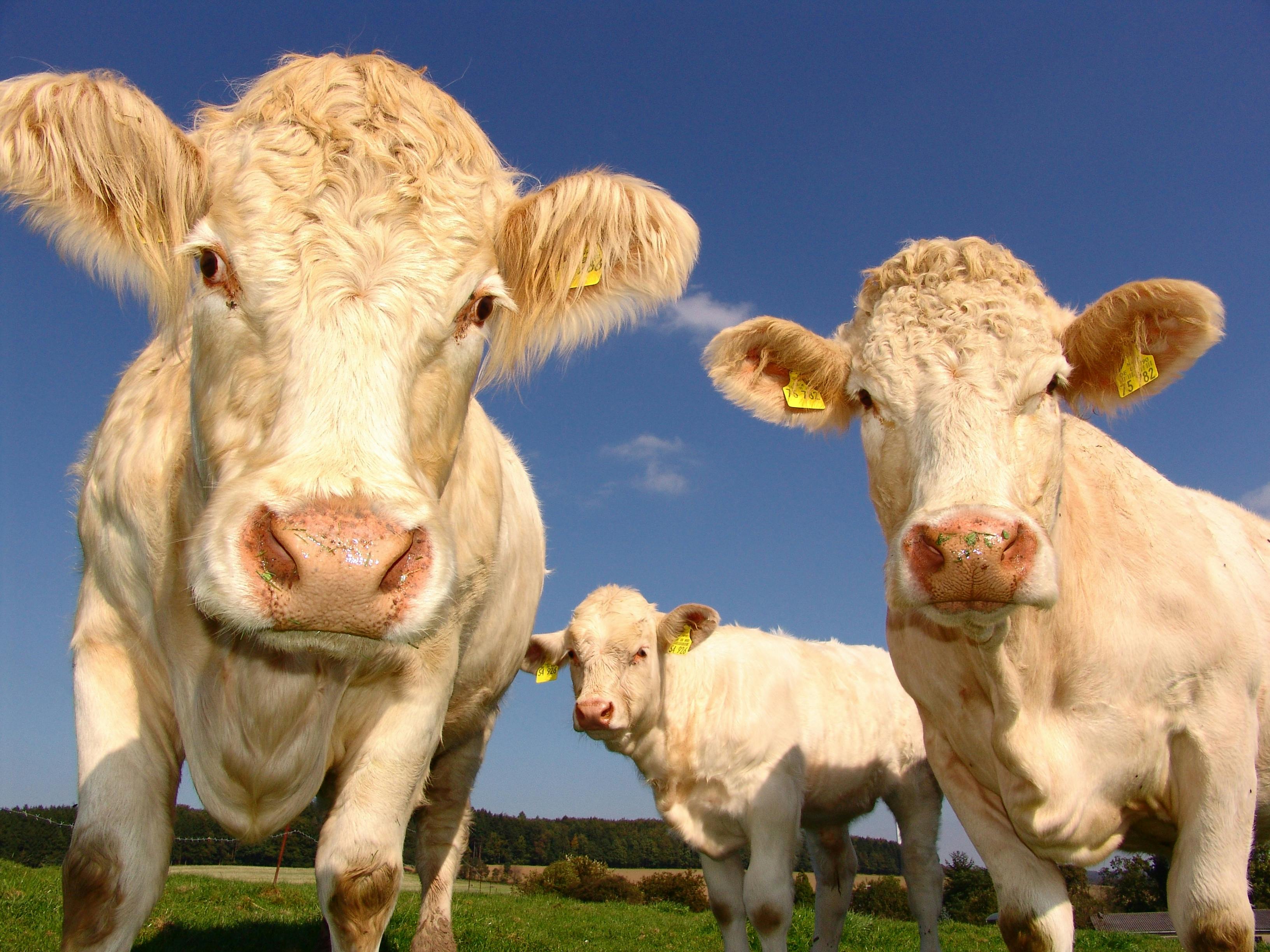
Dogs are known for their unique traits, one of which is their wet noses. Many pet owners often wonder, “Why do dogs have wet noses?” It’s not just a cute characteristic; it plays a role in their health and sensory perception. But have you ever thought about how climate affects your dog’s nose moisture? Well, let’s explore this fascinating topic and uncover the truth behind those moist noses.
Understanding Why Dogs Have Wet Noses
Wet noses in dogs serve multiple purposes. Here are some interesting reasons:
- Enhanced Sense of Smell: Dogs have an incredible sense of smell, and a moist nose helps trap scent particles. This moisture increases their olfactory capabilities.
- Thermoregulation: Dogs can’t sweat like humans do. Instead, they rely on their noses to help cool down. A wet nose can help regulate their body temperature.
- Health Indicator: A dog’s nose can reflect their health. A dry or cracked nose might indicate dehydration or illness, while a moist nose usually signals a healthy pup.
The Science Behind Nose Moisture
The moisture on a dog’s nose comes from a combination of secretion and environmental factors. The nasal glands produce a thin layer of mucus, which is essential for scent detection. But climate plays a significant role in how moist a dog’s nose stays.
- Humidity Levels: In high humidity, dogs’ noses tend to be wetter. This is because the air is saturated with moisture, allowing their noses to stay hydrated easily.
- Dry Climate: Conversely, in arid environments, a dog’s nose can dry out quickly. This can lead to discomfort and sometimes health issues.
- Temperature Changes: Hot weather can lead to increased panting, which might cause a temporary drying effect on the nose. Cold weather can also create a dry nose due to lower humidity levels.
How Climate Affects Your Dog’s Nose Moisture
Different climates can have various impacts on your dog’s nose moisture levels. Here’s a breakdown:
| Climate Type | Effect on Nose Moisture |
|---|---|
| Humid | Increased moisture, healthy nose |
| Arid/Desert | Dryness, potential cracking |
| Cold/Snowy | Dryness, can lead to frostbite |
| Warm/Moderate | Balanced moisture, generally healthy |
Observing Your Dog’s Nose
As a dog owner, it’s essential to regularly check your dog’s nose. Here’s what to look for:
- Texture: A healthy dog nose should be moist and cool to the touch. If it’s excessively dry or scaly, it could be a sign of dehydration or health issues.
- Color: Changes in color can also indicate problems. A dog’s nose should be consistent in color; discoloration might suggest allergies or illness.
- Cracking or Bleeding: Any signs of cracking or bleeding should be addressed immediately by a veterinarian.
Practical Tips for Maintaining Nose Moisture
Here are some practical tips to help keep your dog’s nose moist, especially in changing climates:
- Hydration: Always provide fresh water for your dog. Proper hydration is crucial in maintaining moisture levels.
- Humidifier: If you live in a dry climate, consider using a humidifier indoors. This can help combat dryness and keep your dog comfortable.
- Nose Balm: There are various dog-safe balms available that can be applied to dry noses. These can help protect and moisturize.
- Limit Sun Exposure: Just like humans, dogs can get sunburned. If your dog is outside a lot, especially in the summer, ensure they have shade and limit sun exposure.
Fascinating Fun Facts About Dogs’ Noses
- Dogs have about 300 million scent receptors, compared to humans who have about 5 million.
- A dog’s noseprint is unique, much like a human fingerprint. It can be used for identification!
- The wetness of a dog’s nose can change throughout the day based on activity levels and environment.
Understanding why dogs have wet noses and how climate impacts their moisture levels can help you keep your furry friend healthy and happy. As you navigate different weather patterns, being aware of these factors can make all the difference in your dog’s comfort and well-being. With proper care, your dog’s nose can remain a fascinating and functional part of their anatomy.
Wet Noses and Dog Health: When to Worry and When to Celebrate!

When you see a dog with a wet nose, you might think it’s just another adorable quirk of our furry friends. But there’s actually a lot more going on than meets the eye. Understanding why dogs have wet noses can help you keep an eye on their health, and determine when it’s time to worry or when to just celebrate their playful nature. So, let’s dive into this fascinating topic, and explore the science behind those wet noses!
Why Do Dogs Have Wet Noses?
Dogs have wet noses for several good reasons, and they serve multiple purposes. Here’s a few of the most important ones:
- Scent Enhancement: A wet nose helps dogs smell better. The moisture helps capture scent particles from the air, allowing them to detect odors more effectively. This is why dogs are such great trackers!
- Temperature Regulation: Dogs do not sweat like humans do. Instead, they regulate their body temperature through panting and the moisture on their noses. A wet nose can indicate a cooler temperature, which is beneficial during hot weather.
- Health Indicator: The state of a dog’s nose can be an indicator of their health. Generally, a healthy dog’s nose is moist, while dryness or cracking could signal health problems.
When to Worry About a Dog’s Nose
While a wet nose typically indicates a healthy pooch, there are times when you might need to worry. Here’s a quick list:
- Excessive Dryness: If your dog’s nose is persistently dry and cracked, it may be a sign of dehydration or illness.
- Discoloration: A sudden change in color, like a red or inflamed nose, could indicate an allergic reaction or infection.
- Nasal Discharge: Thick or unusual discharge from the nose can signal respiratory issues or infections.
- Behavior Changes: If your dog seems lethargic, isn’t eating, or shows other signs of distress, it’s best to consult a veterinarian.
When to Celebrate a Wet Nose
On the other hand, there are plenty of times when a wet nose is a cause for celebration! Here are some examples:
- Playful Behavior: When your dog is happily wagging their tail and engaging in play, a wet nose is a sign of excitement and energy.
- Healthy Appetite: If your dog is eating well and their nose is moist, it shows they are in good health.
- Curiosity: Dogs with wet noses often explore their surroundings. If you see your dog sniffing around, it’s a good sign they are happy and healthy.
The Science Behind the Wet Nose
There’s also some interesting science behind why dog noses are wet. The mucous membranes on a dog’s nose secrete a thin layer of moisture that helps with scent detection. In fact, studies show that dogs have up to 300 million smell receptors, compared to a human’s mere 5 million. This incredible sense of smell is what makes dogs such effective service animals and companions.
Fun Facts About Dog Noses
- Did you know that every dog’s nose print is unique, much like a human fingerprint? You could technically use it to identify your dog!
- Dogs have a special organ called the Jacobsen’s organ, which helps them process scents. This organ is located on the roof of their mouth and contributes to their incredible sense of smell.
- Puppies are born with wet noses, but as they grow, their noses can change in texture and moisture level based on their breed and environment.
Comparison of Dog Nose Conditions
Here’s a simple table comparing healthy and concerning nose conditions in dogs:
| Condition | Healthy Nose | Concerning Nose |
|---|---|---|
| Texture | Moist and cool | Dry or cracked |
| Color | Pink or black | Red, inflamed, or discolored |
| Discharge | Clear or no discharge | Thick, green, or bloody |
| Temperature | Cool | Hot or unusually warm |
Dogs are such wonderful companions, and understanding their health is key to keeping them happy. A wet nose can tell you a lot about your furry friend’s wellbeing. So, keep an eye on those noses and celebrate the joy they bring to your life! If you notice any concerning signs, don’t hesitate to reach out to a vet. Your dog’s health is worth the effort!
Conclusion
In conclusion, the wet noses of dogs serve several essential functions that contribute to their overall health and well-being. The moisture helps enhance their sense of smell, enabling them to explore and interact with their environment more effectively. Additionally, a wet nose plays a crucial role in thermoregulation, helping dogs regulate their body temperature. The saliva on their noses also aids in keeping them cool while providing a barrier against potential pathogens. It’s important for dog owners to recognize the significance of a dog’s nose condition as it can indicate their health status. Regular check-ups at the vet can ensure that any changes in your dog’s nose are monitored. So, the next time you give your furry friend a pat, take a moment to appreciate the fascinating biology behind their wet nose. Encourage fellow dog lovers to share their experiences and insights about this unique feature!

